2019 Chevrolet Corvette ZR1: Here It Is
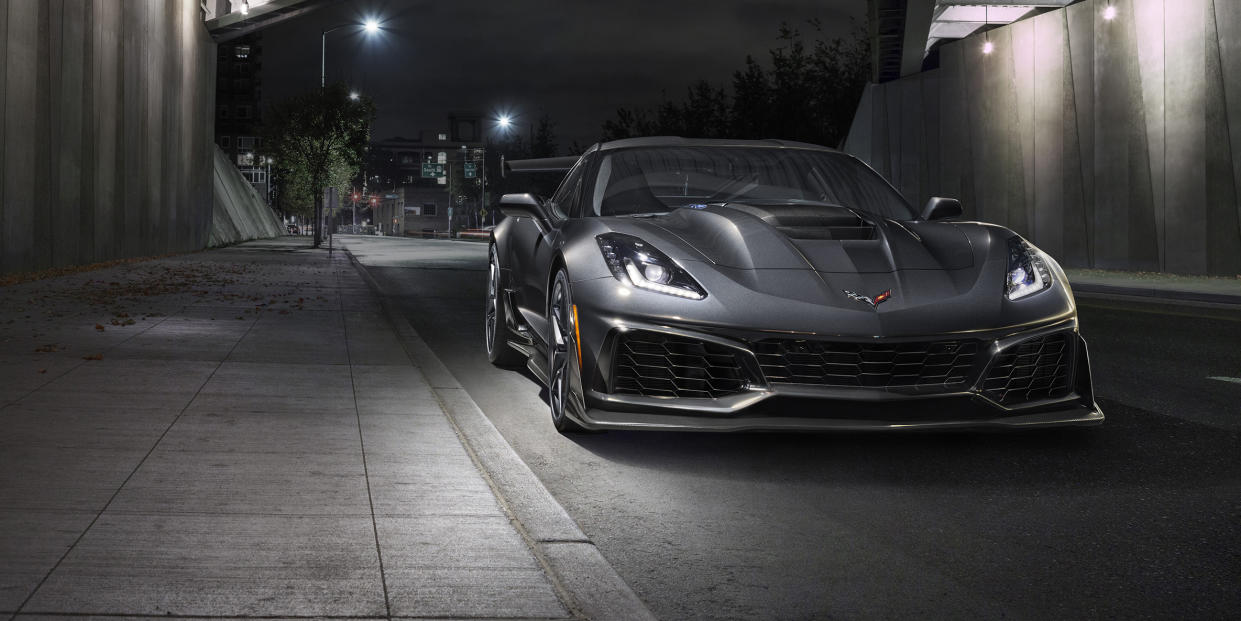
The pack leader is finally here, launched in Sebring Orange to make sure you notice all the significant upgrades that no doubt make it the fastest street car GM has ever made.
Not all Corvette generations spawn a ZR1, but the previous one from 2009 left quite an impression with its 638 horsepower LS9. Eight years wiser, the Corvette team used all they had to create a worthy successor. Looking at all the figures, the C7 ZR1 shouldn't disappoint.
It all start with its big, bulging exposed carbon-fiber hood. Apparently, GM put a lot of effort into coming up with the C6 ZR1's transparent hood window, only to find that some customers thought it looked like a cheap piece of plastic. So this time around, they went all in.
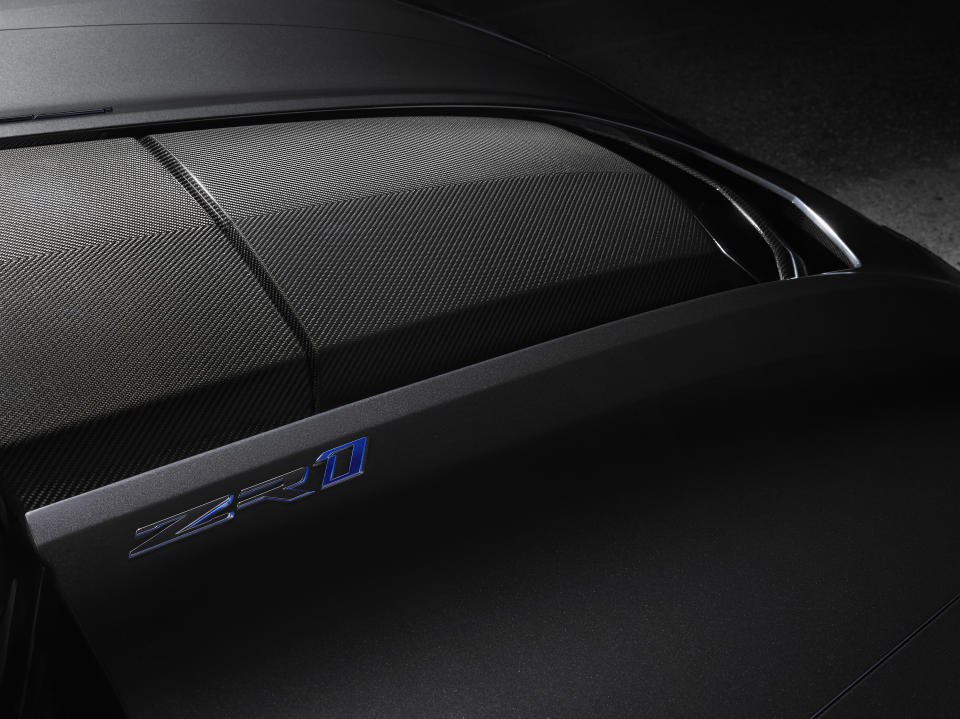
The trick is that one of those two pieces is the actual carbon fiber intercooler cover, meaning that the engine is out in the open through what GM calls a "halo" hood. The carbon weave is perfectly aligned with the body panel, but the intercooler cover will move around when the engine is running, since it's part of the drivetrain. Now that's just bonkers.
What's more, the two openings in front of the cover extrude hot air from the engine bay, which is much needed, since the ZR1 packs eight very angry cylinders.

Despite all the wishful thinking, the new LT5 doesn't come with a DOHC head like the Lotus-enhanced original did in the nineties. Instead, the ZR1's new pushrod V8 features a 52 percent larger supercharger than the Z06's LT4, as well as GM’s first dual-injection system to get 755 horsepower and 715 lb-ft of torque out of high octane and dense air.
This dry sump motor also features GM's largest ever throttle bodies at 95mm, as well as an upgraded crankshaft with a wider key slot. What's even cooler is that the whole thing is connected to a patent-pending active exhaust, which should give you a wider range of nasty noises, promising Motörhead-levels of decibels in race mode. And since they don't expect to sell more than 3000 ZR1s a year, all of the LT5s will be hand-built in Bowling Green.

To keep all that power on the asphalt, Chevrolet came up with an equally serious aero package in a rolling wind tunnel, with both versions of the ZR1's available rear wings bolted to the chassis itself. Not unlike on Corvette Racing's C7.R.
Chevy claims that after benchmarking a few sports cars with active wings, they came to the conclusion that those serve more of an aesthetic purpose than anything else, creating the least drag and the most downforce at their fully extended form. That, and the fact that an active wing would have been a packaging nightmare on the C7 led to a pair of fixed wings, as well as a clever front underwing designed to balance out the additional rear downforce without making the car unusable on the street.
While both wings are bolted to the chassis, only the taller one is said to effect cargo space considerably. Which is fair, because in exchange, it gives the ZR1 an estimated 950 lbs. of downforce near its top speed.
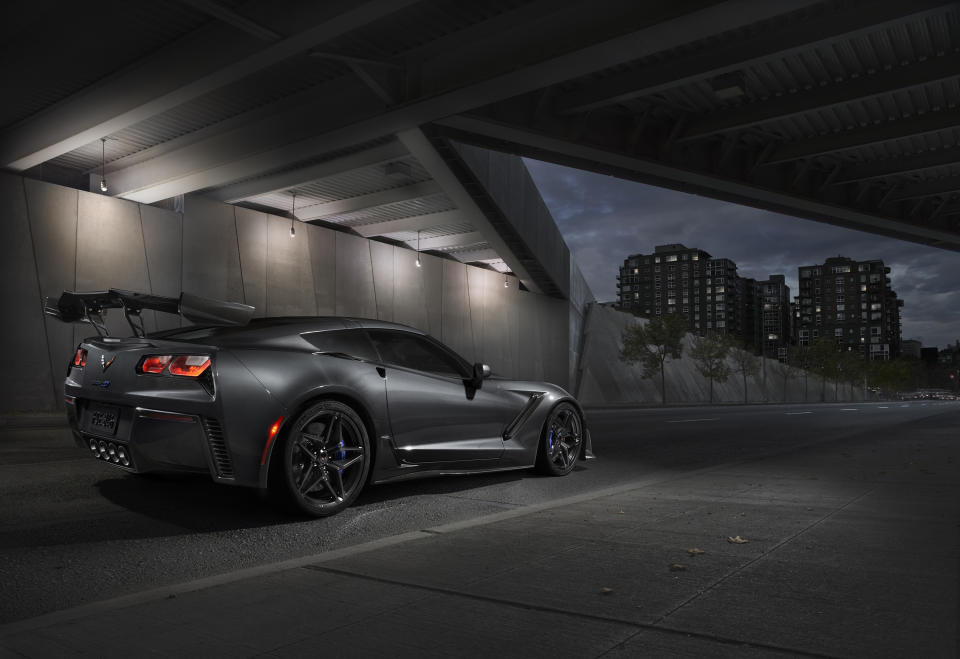
Said top speed is "somewhere above" 210 miles per hour, as long as you stick to the standard wing.
Talking of sticks, there's a seven-speed manual with rev-matching that's "more robust for track duty," but for the first time ever, the ZR1 will also be available with GM's 8-speed automatic. The 10-speed simply didn't fit, as it was never intended for the C7 platform.
If you must know, the final drive ratios are 3.42 (manual) and 2.41 (automatic).
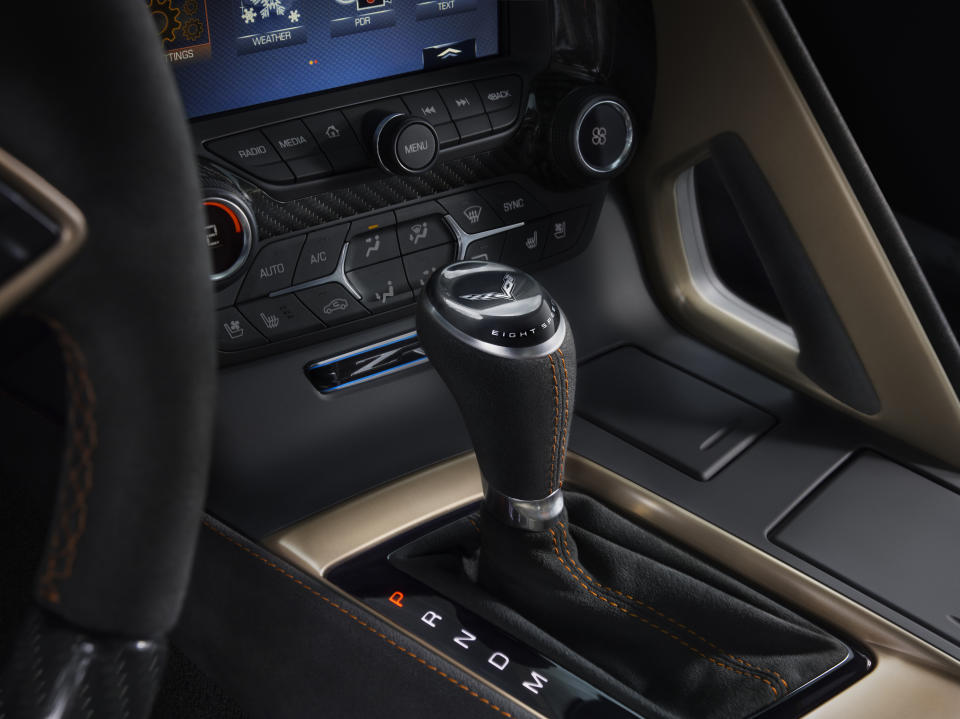
Dual-injection means the LT5 uses primary direct injection as well as supplemental port injection, to get 755 horsepower out of 6.2 liters with the help of that gigantic supercharger. And those "conservatively estimated" 755 horses have to motivate 3560 lbs. of Corvette.
Huge forces demand lots of rubber, so the ZR1 comes with 355 wide rear tires, as well as half an inch wider front wheels with an open design for improved cooling. The brakes are equally monstrous two-piece carbon ceramic rotors, with fixed six-piston aluminum calipers at the front.
Remember the Z06's overheating issues? GM does too.
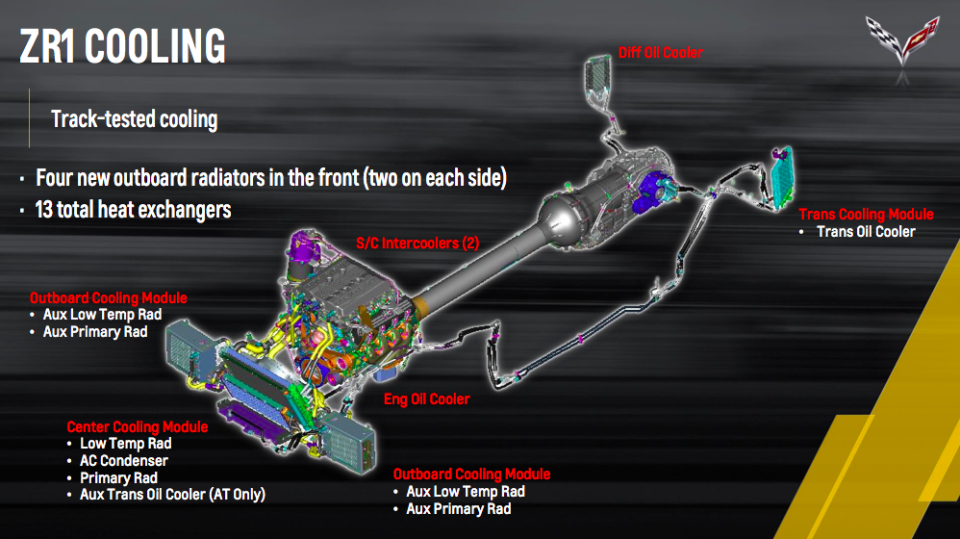
Not only does the ZR1 have a more-efficient intercooler system with a heat extractor hole on its hood, but it also packs four new radiators, bringing the number of heat-exchangers to 13. A Bugatti Veyron has 10.
While this car contains the most carbon fiber GM has ever put in a vehicle, the extra fluids, coolers and the wing adds more weight than the composites can shred, and that's why the ZR1 is slightly heavier at 3560 lbs.
Suspension-wise, it has a double wishbone setup all around, with cast aluminum upper and lower control arms, transverse-mounted composite springs and Magnetic Ride Control standard. The base package also includes a performance-focused traction control system, the electronic differential, and that super loud exhaust.

In terms of design, the ZR1 comes with a completely new front that's basically one giant air intake, as well as the wider body, and lots of optional exposed carbon bits, including the hood, the quarter panel inserts, the side rockers, the front splitter, the rear wing and the removable top.
The brake calipers can be black, gray, yellow or red, while due to popular demand, Chevy kept the chrome wheel option. Luckily, younger buyers can choose from three more tasteful wheel finishes.
Going back to the wings, the standard one generates up to 70 percent more downforce than the Z06’s base aero package, while the available two-way-adjustable high wing grants about 60 percent more than the Z06 with the available Z07 Performance Package.

That's 950 lbs pushing down the back, and to complement that, the ZTK Performance Package also includes a front splitter with carbon-fiber end caps, Michelin Pilot Sport Cup 2 tires (instead of the run-flat Super Sports), and specific chassis and Magnetic Ride Control tuning for greater cornering speeds. Plus the bucket seats, naturally.
Of course if you prefer your ZR1 somewhat milder, you can spec it with heated and vented Napa leather-trimmed seats, and a Bose audio system. Yet options such as the carbon fiber-rimmed steering wheel and the Performance Data Recorder feel more appropriate.
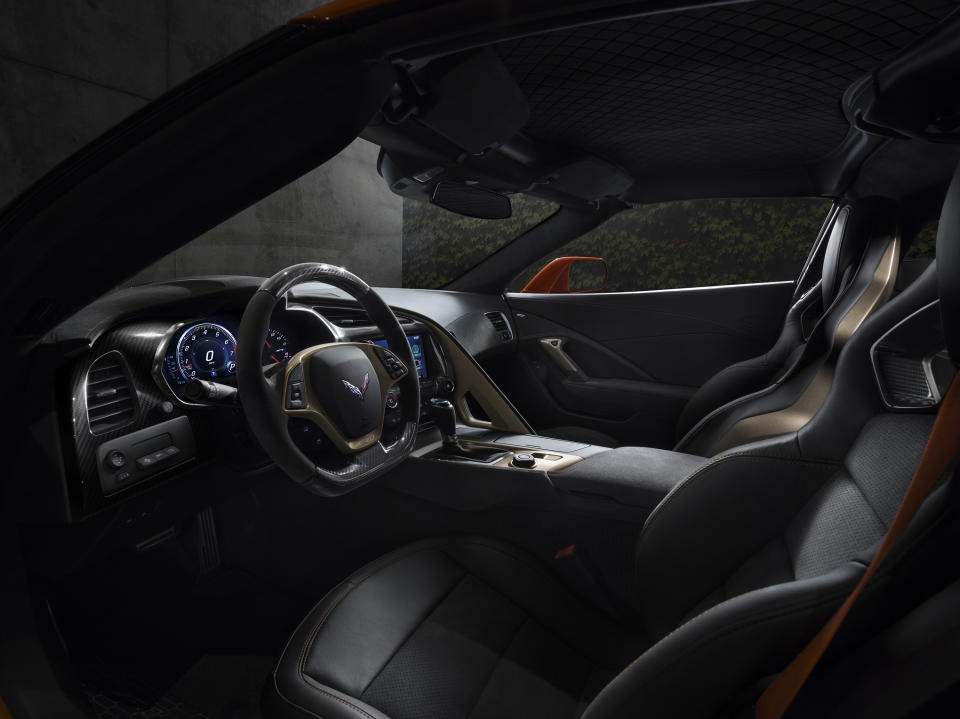
Just to tease us further before the ZR1 goes on sale next spring, the launch car features the Sebring Orange Design Package, which gives you this exterior color, as well as orange brake calipers, rocker and splitter accent stripes, seat belts and interior stitching, with the competition seats and a bronze aluminum interior trim.
It's pretty, and pretty much everything you could want from a Corvette. The Dodge Viper ACR might be dead, but there seems to be a new King of the Hill.
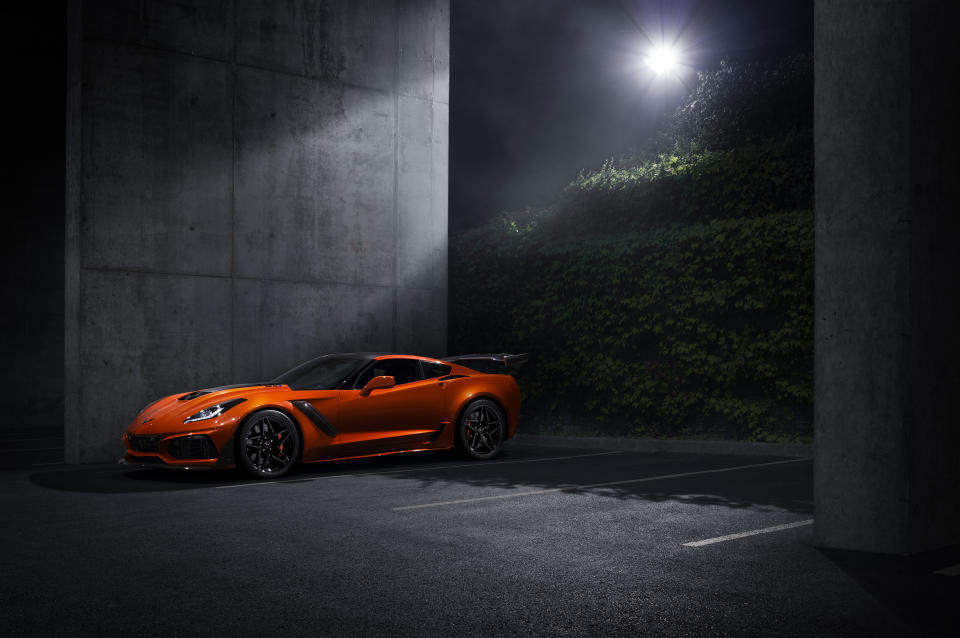
Get your checkbooks ready for next spring, with prices staying "at the usual ZR1 levels". More to come soon!
You Might Also Like

